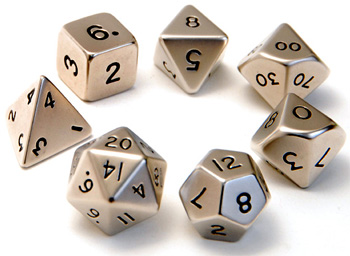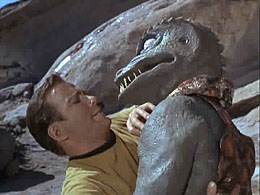Here comes a new challenger!
My sister runs an online RPG (role-playing game). One of her players writes his group interactions – including combat – with a wall of text: probably about thirty different actions in one response.
This isn’t how you run a game in person, let alone one played over the Internet, where everyone has to read everything.
When I played these games (usually around a table with a half-dozen similar geeks), we were told that our “actions” – what we did in the game, usually as a reaction to a stimulus (such as a club being swung at our heads) – would be about ten seconds. If it takes you longer than ten seconds to describe what you’re doing, that’s too long, and it requires more than one action. (And we’d get smacked by our Game Master for such a transgression. This is likely why my default answer for most conflicts was, “Uh…I fire another arrow, I guess.”)
This short-but-sweet technique can help with writing, too, especially when it comes to fights.
My first “real” fight scene – a thankfully brief tussle between a spearman and a cavalryman – read like Kirk fighting the Gorn captain. I described everything in detail, which slowed everything down. Then I remembered the 10-second rule. Any action in a fight scene should be able to be read in at most the same amount of time it would take to perform such an action. Time to read description =< action itself.
Of course, you can vary it a bit, depending on the situation. I wrote one fight scene that was supposed to be very balletic, so I described a lot of it. I thought that was warranted (even if maybe it wasn’t; that’s my story, and I’m sticking to it). But most of my fight scenes, I prefer to keep short. Hack, slash, fall, run. I’ve also found that writing fight scenes with a quicker tempo works better for creating tension.
If a sensei and a gakusei (teacher and student) are having a sparring match, they might be talking and explaining during the moves. A slower, more descriptive block of text might be warranted. But in a life-or-death situation, the curses, punches, and kicks should be flying. One of the best ways I’ve found to keeping this excitement up is not to dwell on any one action for more than ten seconds. Really, more than two seconds is probably too long. But I’ll grant ten seconds, to start.
[youtube http://www.youtube.com/watch?v=rcoVryJmCX0?rel=0&w=560&h=315]
This isn’t homework, necessarily, but take a look at the video above, from the excellent Fist of Legend. Now, decide how you’d write it. (I can tell you how I wrote it…but that would be cheating.) Remember that stylish action should be quick and to the point. You can drop some elaborate moves in there once in a while, but a fight scene is not a dinner party; don’t waste your reader’s time with a lot of unnecessary detail.
So, what’s your technique for writing fight and battle scenes?



Recent Comments
The Real Person!
Author Mayumi-H acts as a real person and passed all tests against spambots. Anti-Spam by CleanTalk.
The Real Person!
Author Mayumi-H acts as a real person and passed all tests against spambots. Anti-Spam by CleanTalk.